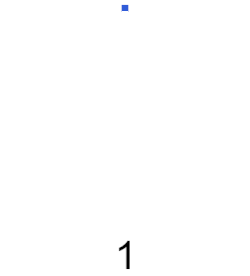
A pentagonal number is a figurate number that extends the concept of triangular and square numbers to the pentagon, but, unlike the first two, the patterns involved in the construction of pentagonal numbers are not rotationally symmetrical. The nth pentagonal number pn is the number of distinct dots in a pattern of dots consisting of the outlines of regular pentagons with sides up to n dots, when the pentagons are overlaid so that they share one vertex. For instance, the third one is formed from outlines comprising 1, 5 and 10 dots, but the 1, and 3 of the 5, coincide with 3 of the 10 – leaving 12 distinct dots, 10 in the form of a pentagon, and 2 inside.
Contents
- Other properties
- Generalized pentagonal numbers and centered hexagonal numbers
- Sum of reciprocals
- Tests for pentagonal numbers
- Gnomon
- Square pentagonal numbers
- Pentagonal Square Triangular Number
- See also
- References
- Further reading
pn is given by the formula:
for n≥ 1. The first few pentagonal numbers are:
1, 5, 12, 22, 35, 51, 70, 92, 117, 145, 176, 210, 247, 287, 330, 376, 425, 477, 532, 590, 651, 715, 782, 852, 925, 1001, 1080, 1162, 1247, 1335, 1426, 1520, 1617, 1717, 1820, 1926, 2035, 2147, 2262, 2380, 2501, 2625, 2752, 2882, 3015, 3151, 3290, 3432, 3577, 3725, 3876, 4030, 4187... (sequence A000326 in the OEIS ).
The nth pentagonal number is the sum of n integers starting from n (i.e. from n to 2n − 1). The following relationships also hold:
Pentagonal numbers are closely related to triangular numbers. The nth pentagonal number is one third of the (3n − 1)th triangular number. In addition, where Tn is the nth triangular number:
Generalized pentagonal numbers are obtained from the formula given above, but with n taking values in the sequence 0, 1, −1, 2, −2, 3, −3, 4..., producing the sequence:
0, 1, 2, 5, 7, 12, 15, 22, 26, 35, 40, 51, 57, 70, 77, 92, 100, 117, 126, 145, 155, 176, 187, 210, 222, 247, 260, 287, 301, 330, 345, 376, 392, 425, 442, 477, 495, 532, 551, 590, 610, 651, 672, 715, 737, 782, 805, 852, 876, 925, 950, 1001, 1027, 1080, 1107, 1162, 1190, 1247, 1276, 1335... (sequence A001318 in the OEIS ).
Generalized pentagonal numbers are important to Euler's theory of integer partitions, as expressed in his pentagonal number theorem.
The number of dots inside the outermost pentagon of a pattern forming a pentagonal number is itself a generalized pentagonal number.






















